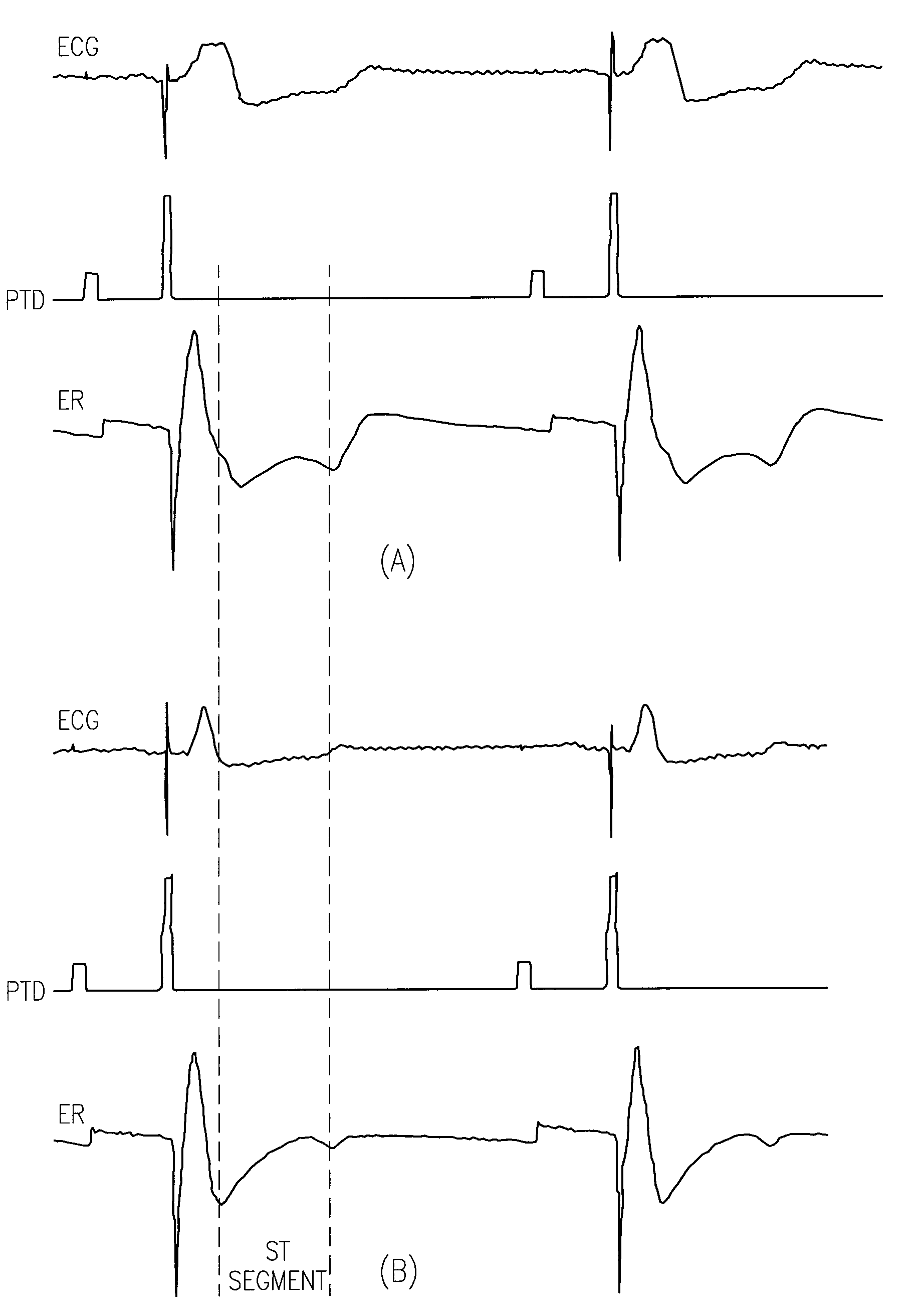Evoked response sensing for ischemia detection
a technology of ischemia detection and evoked response, which is applied in the field of system and method of cardiac rhythm management, can solve the problems of increasing cardiac output, increasing metabolic demand, and imposing severe limitations on patients with respect to lifestyle and activities, so as to reduce the maximum allowable sensor-indicated rate and increase the current of injury
- Summary
- Abstract
- Description
- Claims
- Application Information
AI Technical Summary
Benefits of technology
Problems solved by technology
Method used
Image
Examples
Embodiment Construction
[0011]Pacemakers are typically implanted subcutaneously on a patient's chest and have leads threaded intravenously into the heart to connect the device to electrodes used for sensing and pacing. A programmable electronic controller causes the pacing pulses to be output in response to lapsed time intervals and sensed electrical activity (i.e., intrinsic heart beats not as a result of a pacing pulse). Pacemakers sense intrinsic cardiac electrical activity by means of internal electrodes disposed near the chamber to be sensed. A depolarization wave associated with an intrinsic contraction of the atria or ventricles that is detected by the pacemaker is referred to as an atrial sense or ventricular sense, respectively. In order to cause such a contraction in the absence of an intrinsic beat, a pacing pulse (either an atrial pace or a ventricular pace) with energy above a certain pacing threshold is delivered to the chamber.
[0012]The present invention may be incorporated into pacemakers h...
PUM
 Login to View More
Login to View More Abstract
Description
Claims
Application Information
 Login to View More
Login to View More - R&D
- Intellectual Property
- Life Sciences
- Materials
- Tech Scout
- Unparalleled Data Quality
- Higher Quality Content
- 60% Fewer Hallucinations
Browse by: Latest US Patents, China's latest patents, Technical Efficacy Thesaurus, Application Domain, Technology Topic, Popular Technical Reports.
© 2025 PatSnap. All rights reserved.Legal|Privacy policy|Modern Slavery Act Transparency Statement|Sitemap|About US| Contact US: help@patsnap.com



